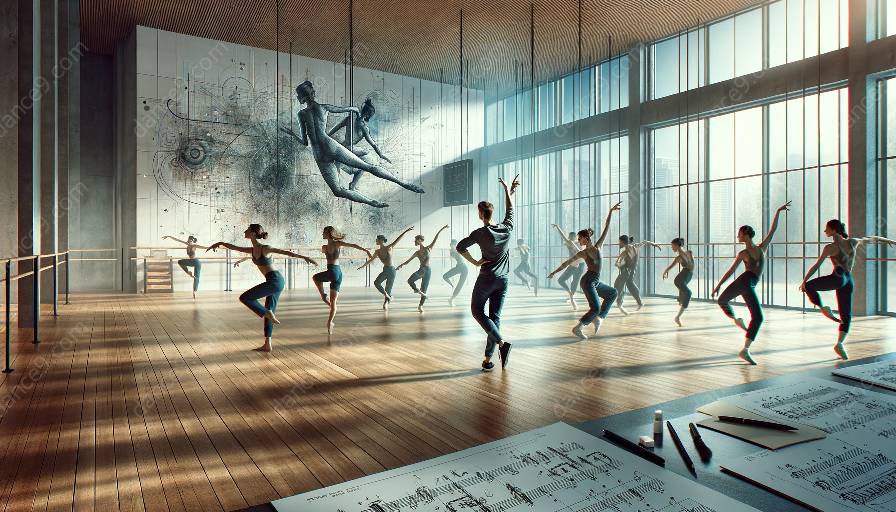Contemporary dance is a dynamic and innovative art form that continually pushes boundaries, and choreographers play a crucial role in shaping the visual and emotive impact of dance performances. In this digital age, choreographers have embraced the use of lighting and visual effects to transform the stage into a mesmerizing canvas, enhancing the narrative and emotions conveyed through movement. Understanding how choreographers approach the integration of lighting and visual effects in contemporary dance performances provides insights into the evolution of this expressive art form.
Choreography in Contemporary Dance
Contemporary dance is a style of expressive dance that combines elements of several dance genres, including modern, jazz, and ballet. It often emphasizes versatility and improvisation, reflecting the ever-changing nature of movement and expression. Choreography in contemporary dance involves creating original sequences of movement that capture emotions, narratives, and societal themes. Choreographers explore new ways to communicate through movement, often integrating unconventional techniques and innovative concepts. Lighting and visual effects become essential components in bringing these choreographic visions to life on stage.
Understanding Choreographers' Approach to Lighting and Visual Effects
Choreographers approach the use of lighting and visual effects in contemporary dance performances with a multifaceted perspective that harmonizes with the thematic, emotional, and technical aspects of their choreography. The thoughtful integration of lighting and visual effects can magnify the impact of the choreographed movements and profoundly shape the audience's experience.
Emotional Enhancements
Choreographers strategically use lighting and visual effects to amplify and intensify the emotive content of their choreography. For poignant moments, subtle and warm lighting can evoke intimacy and vulnerability, allowing the audience to engage with the raw emotions conveyed by the dancers. Contrastingly, dynamic lighting and visual effects can electrify the stage, heightening the energy and excitement of the performance, creating a pulsating atmosphere that captivates spectators.
Atmospheric Ambiance
Lighting and visual effects are leveraged in contemporary dance performances to conjure specific atmospheres that complement the choreography. By altering the colors, intensities, and patterns of light, choreographers can create otherworldly or ethereal environments that transport audiences into the surreal realms envisioned by the choreographer. Visual effects, such as projections and digital imagery, add another dimension to the performance, blurring the lines between the physical and digital realms, enabling choreographers to further weave their narratives.
Expressive Symbolism
Choreographers often utilize lighting and visual effects as symbolic elements that synergize with the narrative and thematic underpinnings of their choreography. Lighting can become an extension of the dancer's movements, emphasizing symbolism and conveying abstract concepts through visual language. Visual effects, including projections and multimedia installations, offer choreographers boundless creative possibilities to interweave the visual and kinesthetic elements, amplifying the depth and layers of their choreographic storytelling.
Technical Considerations
Choreographers collaborate closely with lighting designers and technicians to translate their creative visions into a technical reality. Understanding the capabilities and limitations of lighting and visual effects equipment is crucial in executing choreographic concepts effectively. Choreographers navigate the intricacies of stage lighting, color temperatures, and shadow play to curate the aesthetic palette that complements their choreography. By leveraging technology and innovation, contemporary dance choreographers can push the boundaries of traditional stage lighting, incorporating LED technologies, interactive projections, and immersive visual effects to redefine the visual landscape of dance performances.
Seamless Integration
The integration of lighting and visual effects in contemporary dance performances demands a seamless synthesis with the choreography. Choreographers must create a symbiotic relationship between movement and visual design, employing precision and timing to orchestrate flawless transitions between lighting cues and choreographed sequences. This cohesive integration of lighting and visual effects elevates the overall artistic impact of the performance, accentuating the dancers' movements and compelling the audience to immerse themselves in the multidimensional sensory experience.
Evolution and Innovation
The relationship between choreography, lighting, and visual effects in contemporary dance is evolutionary, with choreographers constantly pushing boundaries and exploring innovative techniques to redefine the aesthetic and emotional impact of their performances. As technology advances and new tools become available, choreographers continue to experiment with inventive ways of integrating lighting and visual effects into their choreography, embracing the symbiosis of art and technology to unveil unprecedented artistic expressions. The amalgamation of choreography, lighting, and visual effects in contemporary dance performances represents a harmonious fusion of artistic disciplines, where movement, light, and imagery coalesce to create transcendent and immersive experiences for audiences worldwide.




























